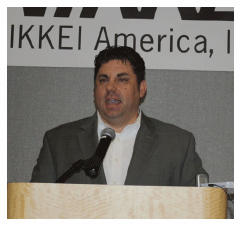

Speaker: Mike Viale, Daikin AC America. For more than 80 years, Daikin has been supplying high-quality air conditioning equipment for residential and commercial applications. Daikin was established in 1924 in Osaka, Japan, and is a global leader in air conditioning and heating products.
One of our goals environmentally is to reduce CO2 emissions. Roughly 80% of the world is heating with fossil-based fuel. By going to an electric heat pump system we can minimize the amount of CO2 used to heat our facilities.
Our VRV heat pumps are meant to draw down the amount of power used, and we are typically 30 to 40% more efficient than a standard heat pump. All of our products are inverter driven and inverter technology is very similar to the throttle in your car. We modulate the frequency of the electricity coming into the system and we can control the speed on the compressor to ramp it up and down, depending on the load in the facility. That’s important because about 70% of the time we are at 75% of capacity or less. When we’re running at less than full load, which is most of the time, we’re wasting energy or we’re short cycling, where the system constantly turns on and off, and does not provide a constant temperature to the user.
Compared to a traditional system, the inverter-driven system reaches room temperature at a much more rapid pace, and we maintain a set point much closer to what you want. A traditional system would overshoot your set point, shut off, wait for the temperature to increase, and turn back on. With our inverter technology, we can ramp the compressor down to match the load more precisely and minimize the on/off cycles you would
typically see.
One of the other advantages of the VRV is its reduced footprint. A typical hotel in Las Vegas has a cooling tower with a chiller and a boiler set for hot water. It works pretty well for the most part, except that it is a huge mechanical system throughout the space. You don’t really get any fluctuation in your load. At peak load, that’s fine, but at part load you need a way to ramp down the energy.
At roughly 3 x 5 x 6, our VRV’s footprint is very small, which helps with structural requirements, and our maintenance is far, far less. You can match any load you need precisely because it’s modular, and we are only running the systems we need to at
any given time. When a space is unoccupied, you’re not cooling or heating it unnecessarily.

